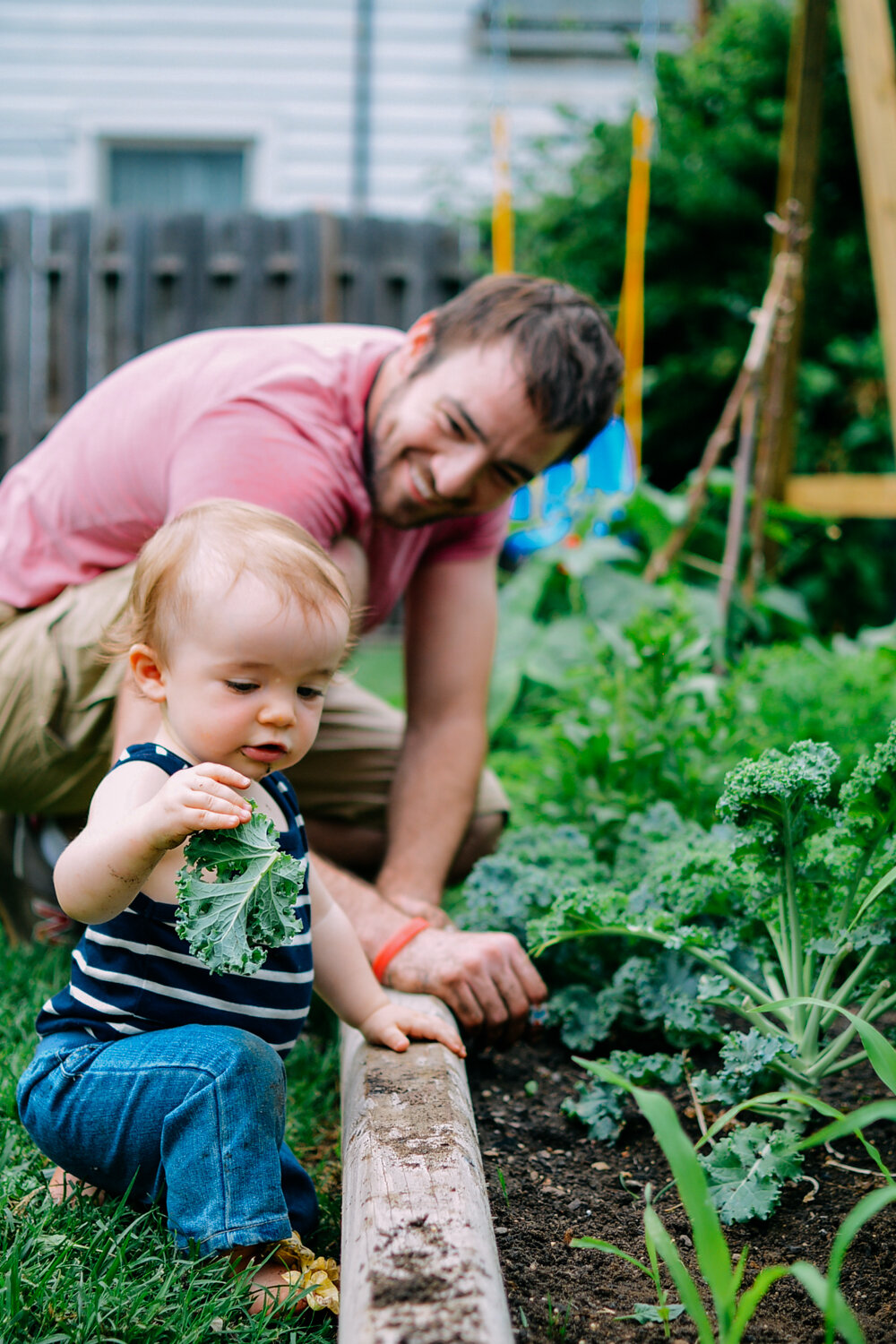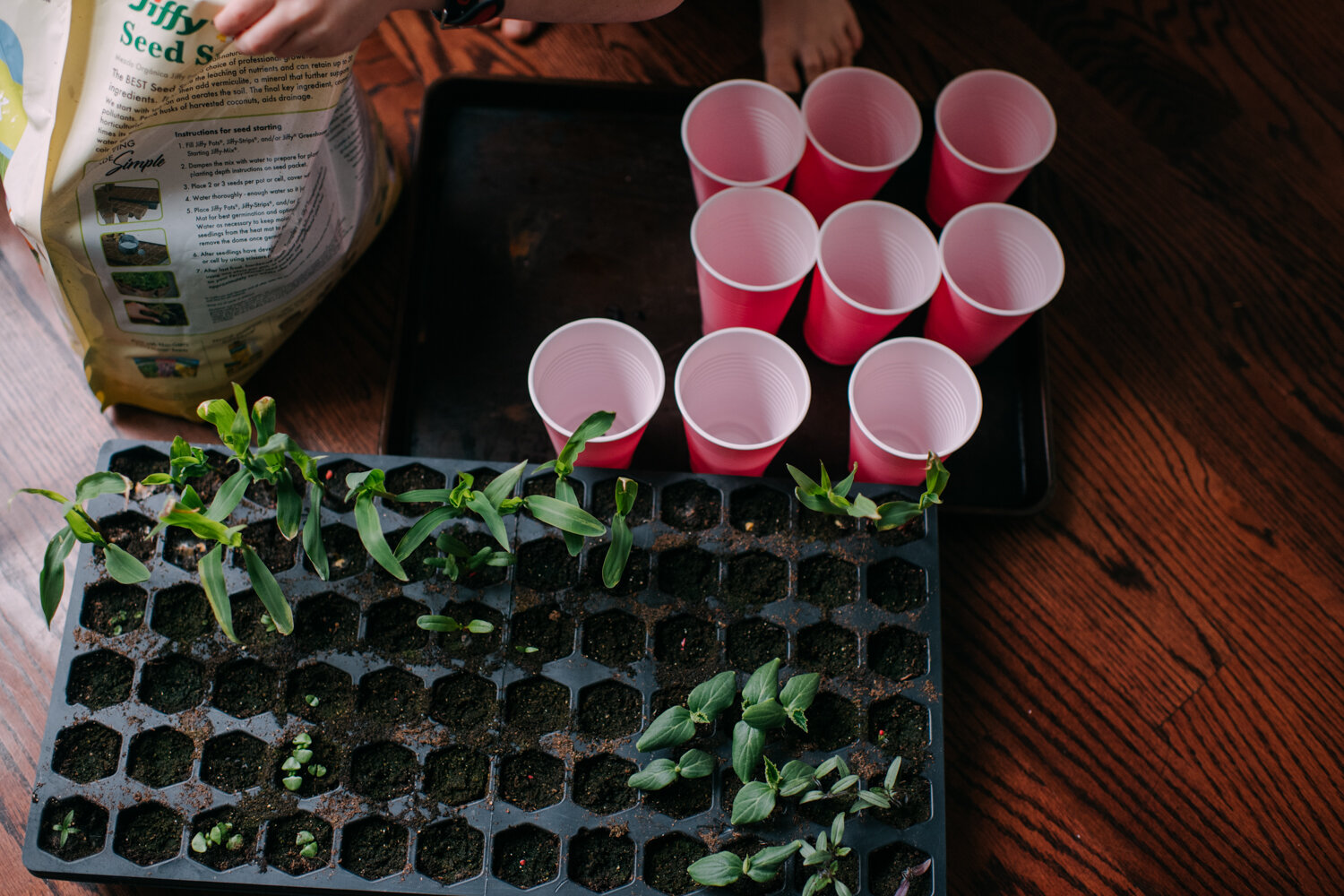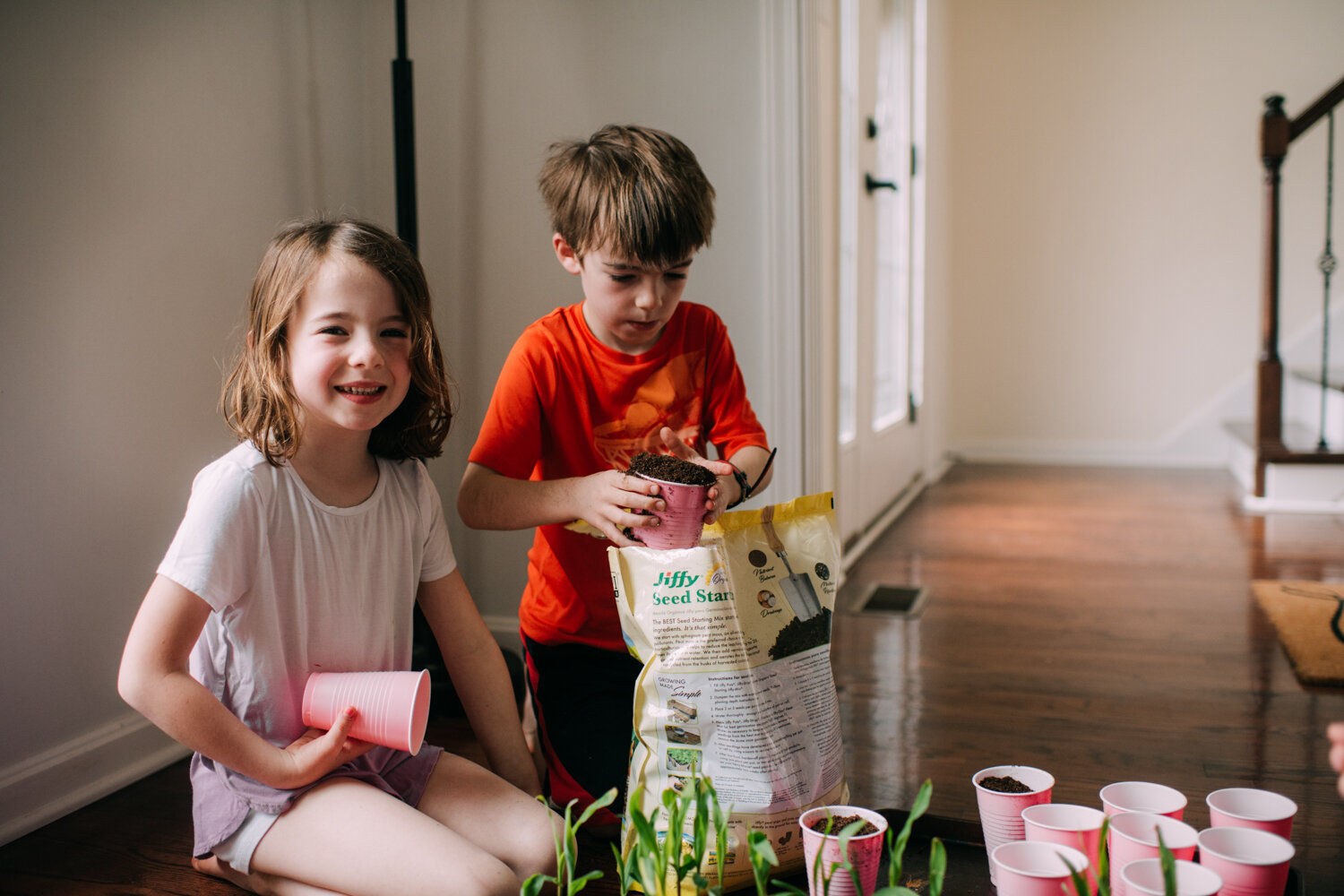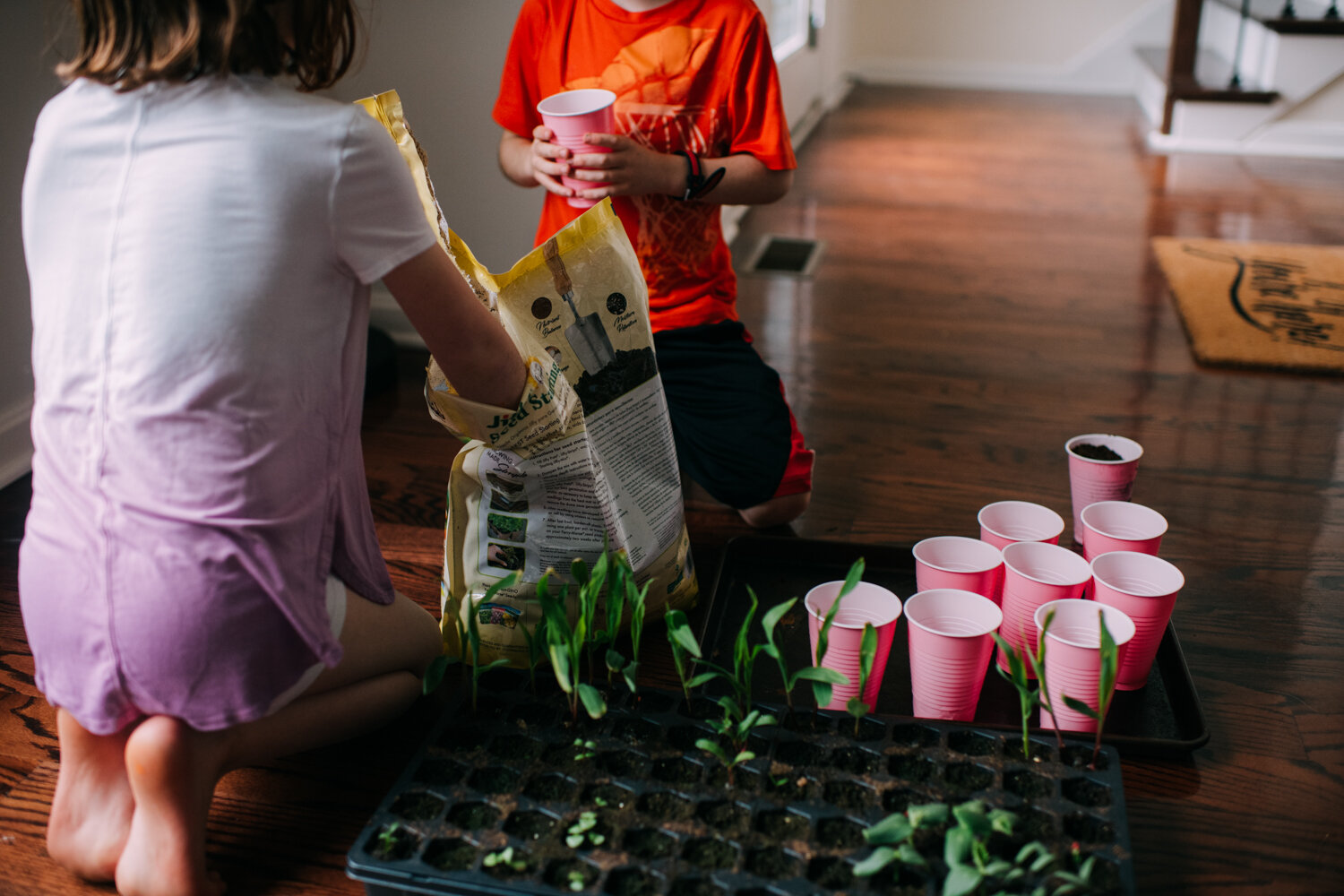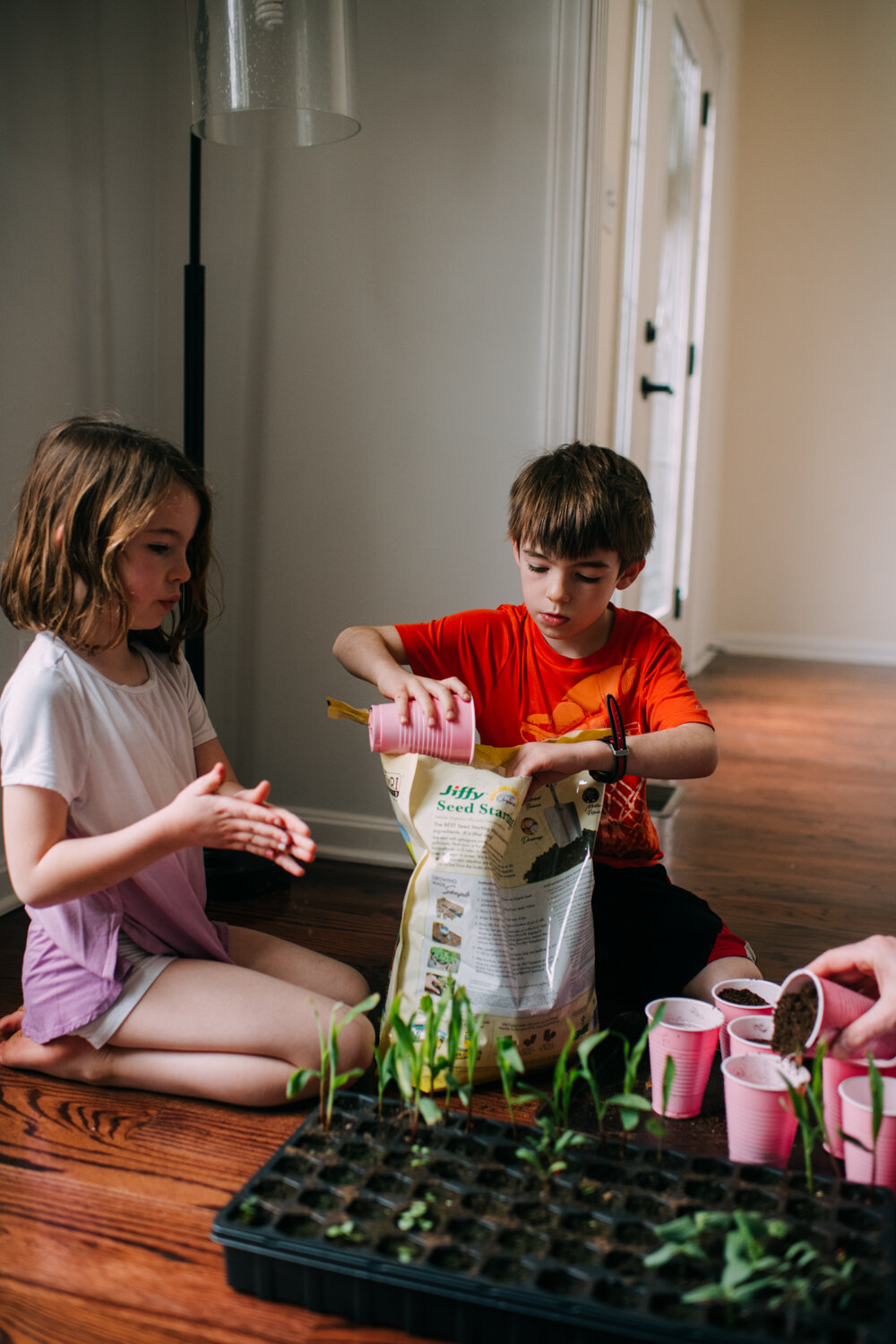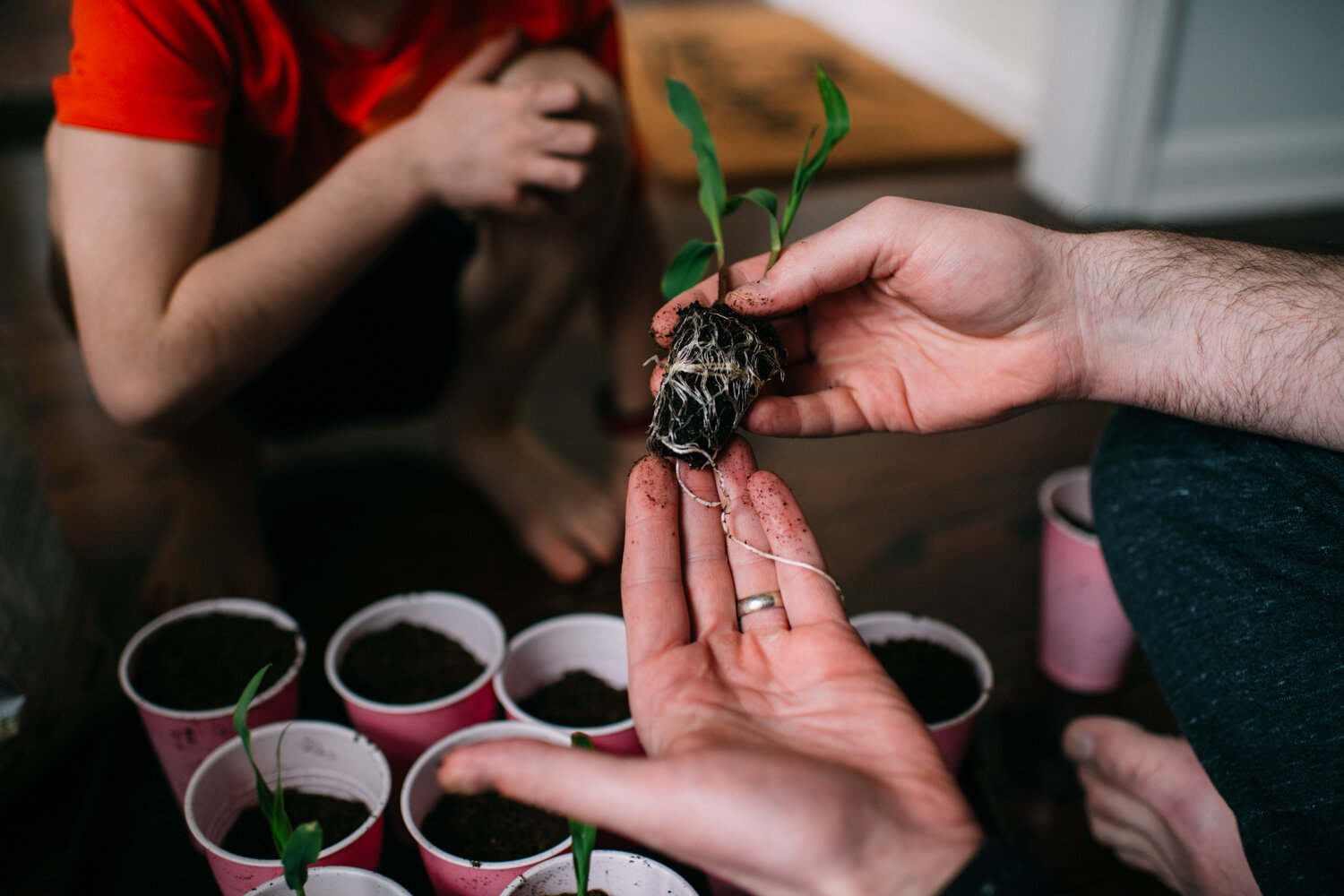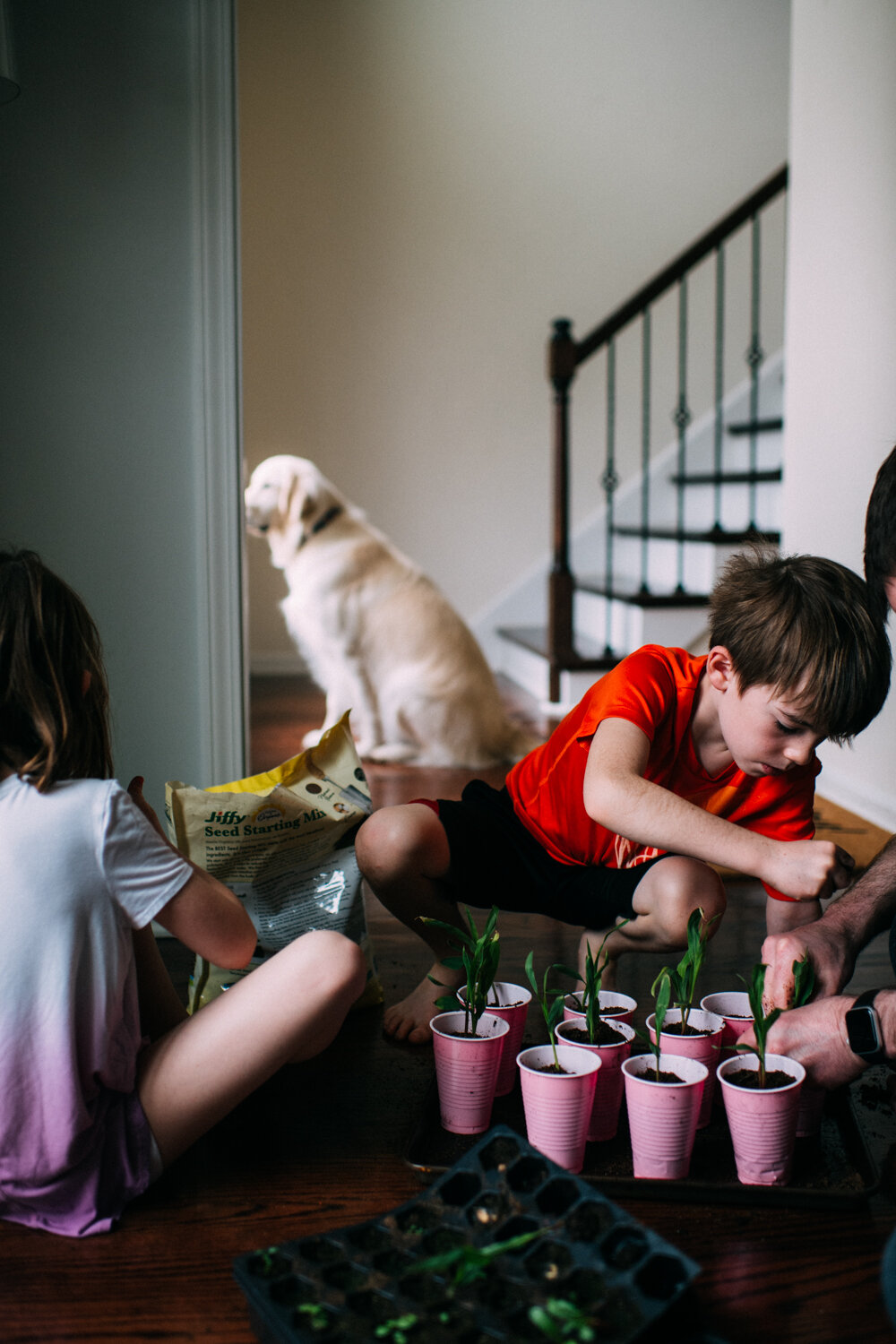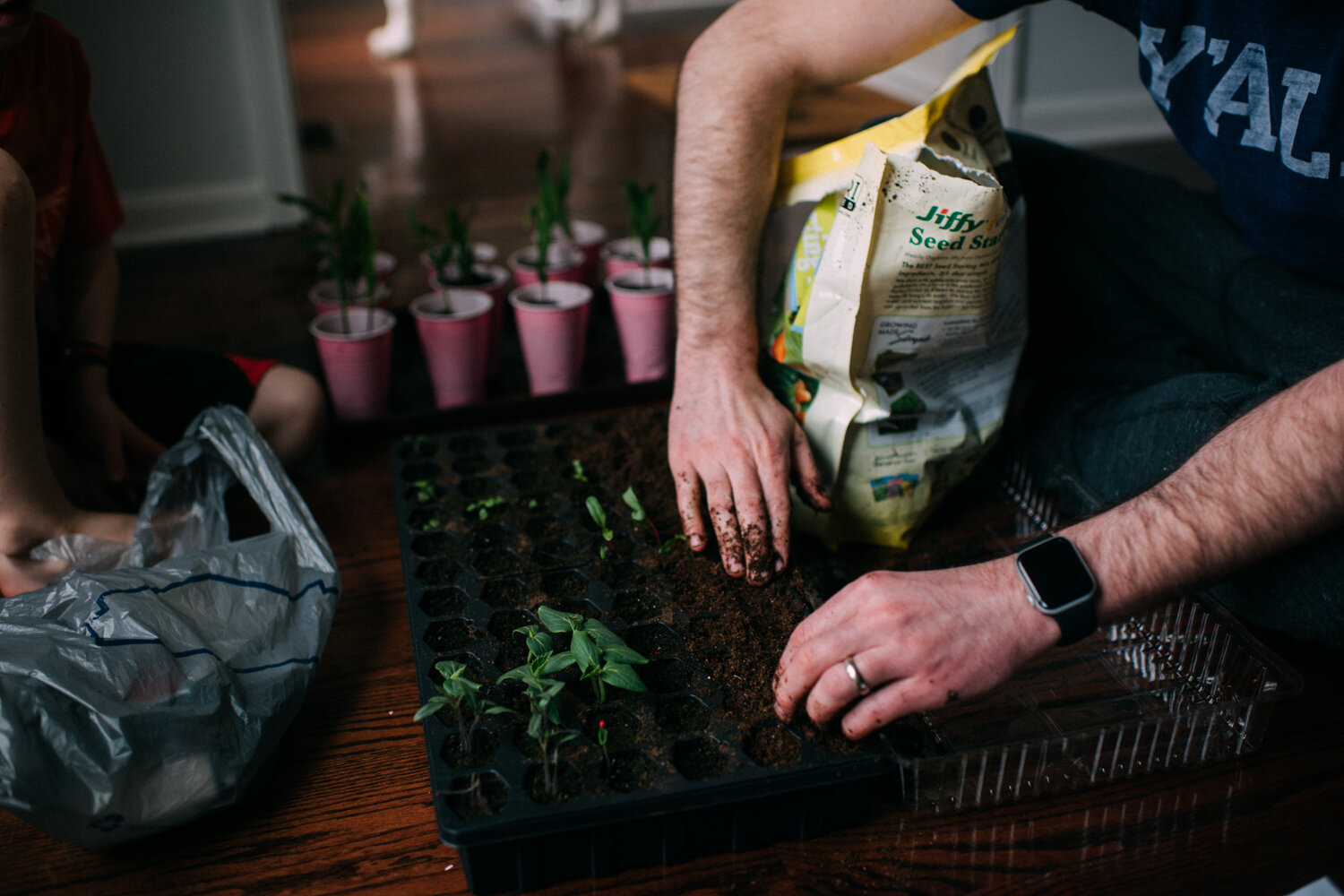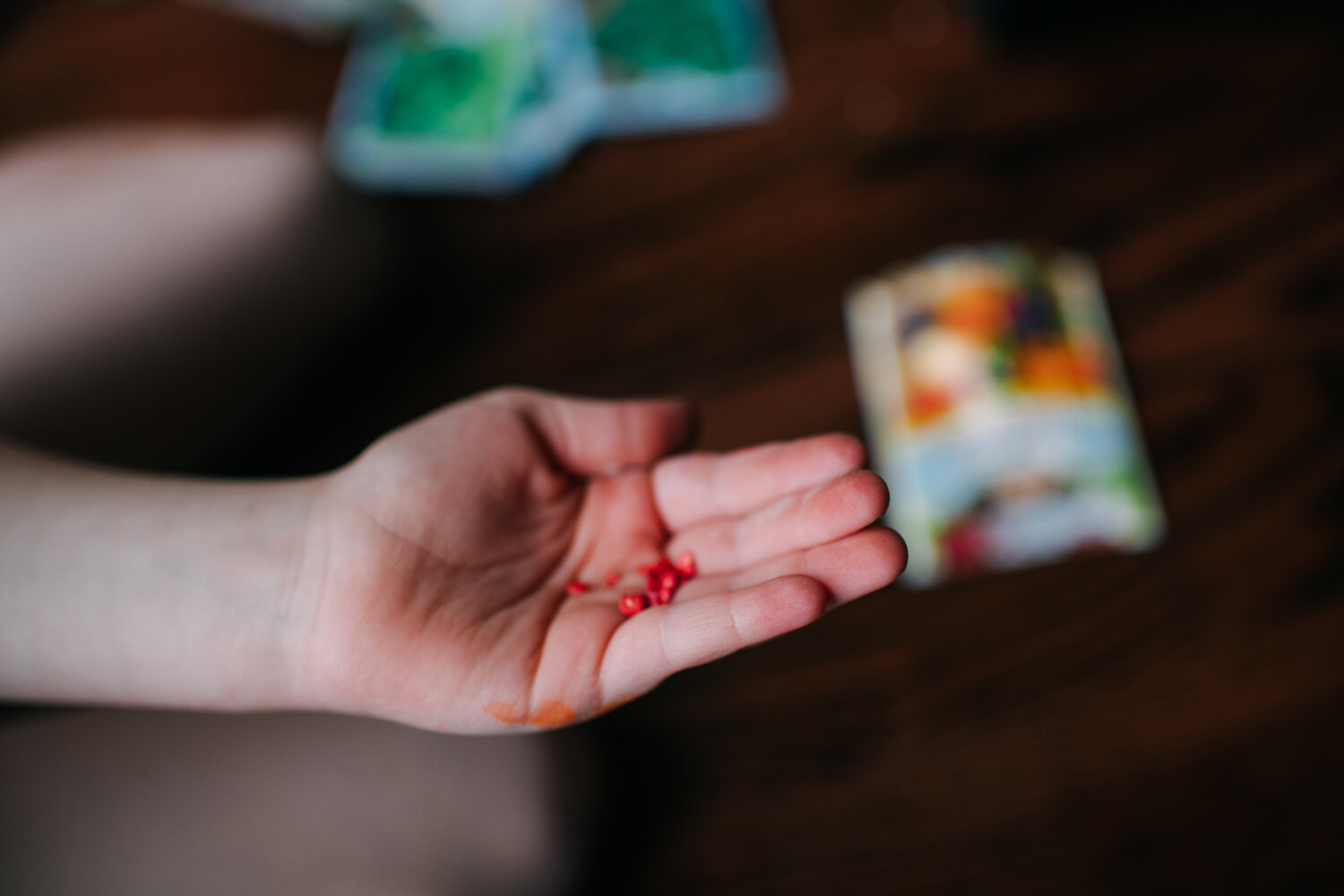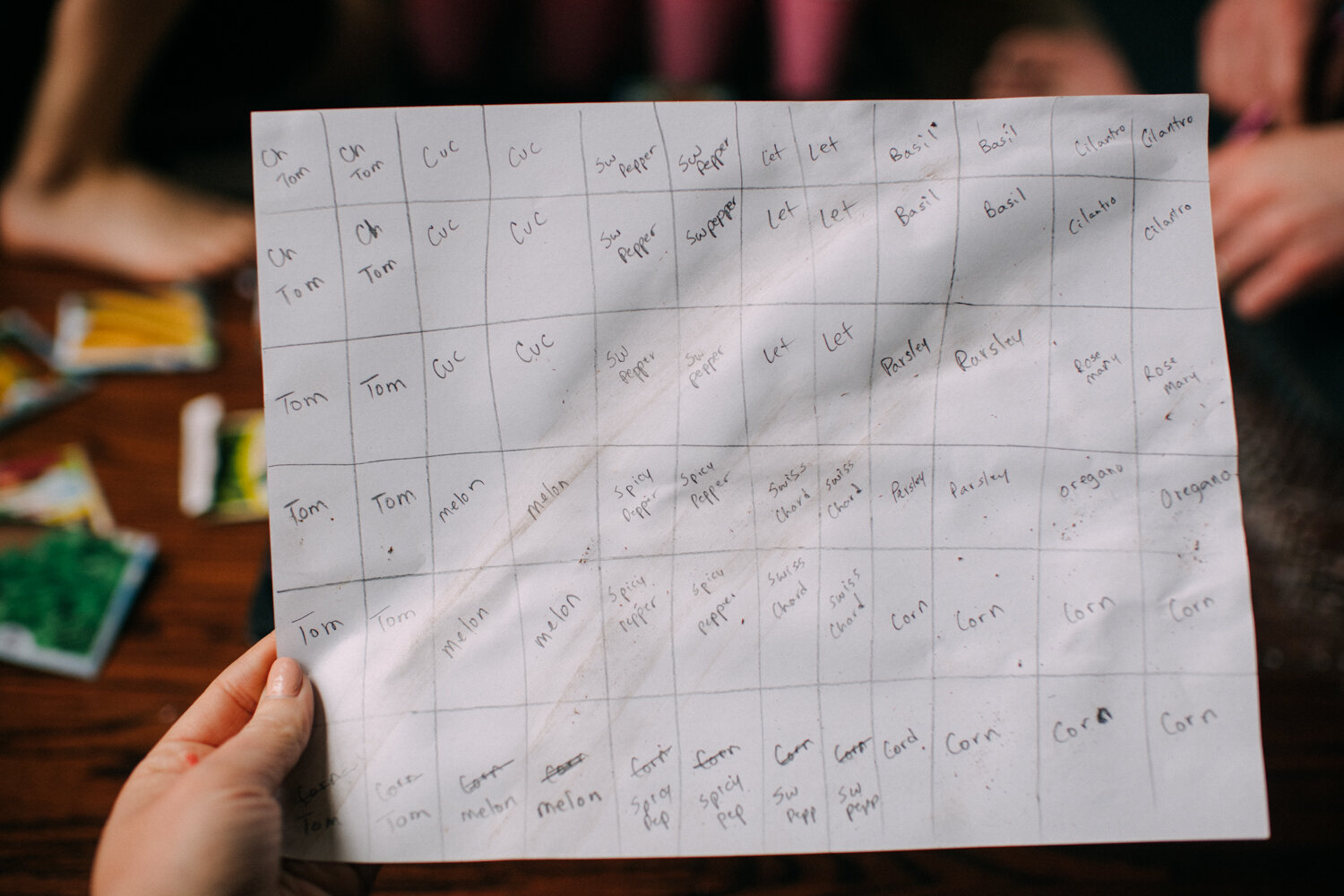What does a garden signify to you? Maybe you have zero desire to have or keep up with one. To plant, water, watch, wait, harvest, and go through the whole process. That’s okay, I still think this post will mean something to you..
VERY early on in our marriage my husband Asa has always created a garden in our backyard. The first one was on 2nd street in Old Louisville. Gardening and growing is basically his thing. He has always gotten so excited to create a plan, a blueprint of how he dreamt it would be. I wish I had pictures of all of them (and maybe I do?) but what I did remember that I have, are photos from 2013.. when Pierson was twelve months old and we lived in our first HOME…and oh my heart, Guys. How sweet are THESE? Jackson Street, how I love and miss you and cherish all of these sweet memories!
Anyway, back to why you are here—gardens and how in the world to get started! This is what Asa had to say on it…
When it comes to planting seeds and starting gardens I like to employ the KISS method of thinking. It’s not very elegant, but Keep It Simply, Stupid. (Sorry, you aren’t stupid. I needed a working acronym.) Basically, don’t over think it. You need soil, light, water and a seed. We can get into the nuances of which soil, how much light, and how much water. The temperature of water and soil? Which seeds? Organic of non-organic? Which variety of each seed? And the list goes on. If this is your first garden, keep it simple. Learn as you go. There is a reason growing seeds is a kindergarten science project. Just grab dirt and a cup. Bury your seeds (not too deep). Add water and put them in a window. You’re likely to have success.
The more detailed version of what we are doing is this. Grab yourself a seed tray from the hardware store. (Probably any department store will carry them this time of year.) This tray has 72 slots, which admittedly is a LOT of seedlings for my family. I grabbed one bag of organic vegetable potting soil to fill the slots. To be honest, “organic” was the option on sale that day. I don’t have a strong preference here. Then I grabbed seeds. This one is tricky to do the first time or two. Knowing what seeds will grow in your yard, how much sunshine your projected garden gets outside, what food your family will eat, and eat regularly and other factors really go into seed selection. For now, pick things that need full sun, (thats most fruits and vegetables) and think of things you’ll eat. We eat a lot of tomatoes, cucumbers, peppers, spinach, lettuce, melons, and herbs.
When you plant seeds, put 2 or 3 seeds in each cup. This is a fail safe for you. If one or more seed is dead, hopefully the other will grow. As the seedlings grow, you will need to thin it down to one strong seedling per pod. This is normal. Don’t sweat it. Save the nutrients in the dirt for the healthiest one that sprouts. Once your seeds are planted you need to give them a little water. Keep the soil MOIST (yeah, I said it) but not wet. And put the cups in a bright window. We are using grow lights from an old AeroGarden. The AeroGardens are amazing indoor planters, but cost a fortune. And honestly they limit the number of seedlings you can sprout to 7-9. So I’m simply using the lights above my tray this time around.
As your seeds grow, you will need to transplant them to bigger cups from their slots in the tray. Keep them indoors until all risk of frost has passed. About a week or so before you put them outside, you need to “harden off” the seedlings. This simply means put them outside for 8-10 hours a day and bring them in at night. It gets them used to the temperature change of the outdoors. Once they are hardened off, you can plant them directly into the soil at the appropriate distance (social distance?) from each other. The seed packages will have all the planting and sunlight details on them.
This year we are growing some of our favorites, tomatoes, cucumbers and peppers. And adding some new things to try like carrots and swiss chard. The newest goal for this springs garden is to create a rhythm of planting so we are daily harvesting and replanting to keep a steady stream of food, instead of a massive harvest with too much to eat at one time.
Lara Casey is one of my favorite authors and I love her heart for the Lord. In an excerpt from her book, Cultivate: A Grace-Filled Guide to Growing an Intentional Life, she said this:
The world says do more, grow fast, be big, use these tricks, analyze, do it like those people, get ahead. But that’s not how good things take root. Maybe, despite what everyone tells you, slow is richer than fast. Maybe a slower pace will help your roots stretch deep and wide. It’s okay to grow slow.
I always feel like I resonate SO much with her words, her philosophy, and I just wanted to share even a snippet of her wisdom. GOOD things take time. A slow pace is not bad. We need roots, we need to be able to stretch, to grow, to replenish our nutrients. And you know what…? Right now, when the world seems to be at the quite possibly the largest stand still it has ever been in MY life, maybe this is THE perfect time to work on growing slow.
Friends, order some seeds or get them from your local grocery store if yours are still open, and just start. See what takes sprout, and where it goes from here. And if you have questions—email me! Asa is so awesome and kinda geeks out over this stuff :)




